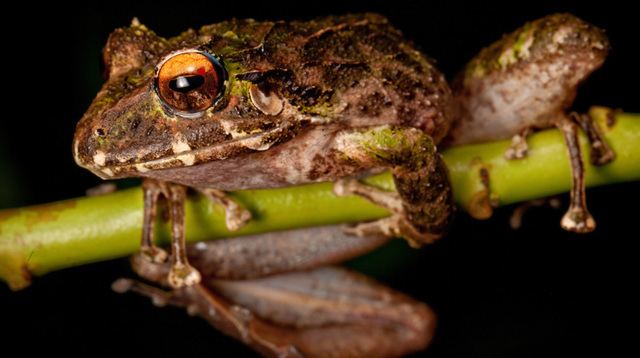Order Anura Higher classification Eleutherodactylus | Phylum Chordata Scientific name Eleutherodactylus nortoni Rank Species | |
 | ||
Similar Eleutherodactylus, Frog, Amphibians | ||
The spiny giant frog or Norton's robber frog, Eleutherodactylus nortoni, is a species of frog in the Eleutherodactylidae family. It is endemic to Hispaniola and known from the Massif de la Hotte, Massif de la Selle, and Sierra de Baoruco, occurring in both the Dominican Republic and Haiti. It is named after James W. Norton who accompanied Albert Schwartz in his 1974 expedition to Hispaniola and collected the holotype.
Contents
Description
The five adult males in the type series measure 52–66 mm (2.0–2.6 in) in snout–vent length. The colouration is green with darker green, irregular blotches. These blotches become nearly diagonal laterally. The fore- and hindlimbs have subcircular blotches; the thighs have three bars.
The advertisement call of males is a series of about five rising glissando trills, ending in a semi-whistle.
Habitat and conservation
The species' natural habitats are sinkhole caves in upland broadleaf forest and forest remnants at elevations of 576–1,515 m (1,890–4,970 ft) above sea level. Males are calling from tall vegetation and rocks. Once considered locally not rare, Eleutherodactylus nortoni is now uncommon and assessed as "critically endangered". It is threatened by habitat loss caused by logging and agriculture. It is known from the Pic Macaya and La Visite National Parks in Haiti and from Sierra de Bahoruco National Park in the Dominican Republic, but habitat degradation is occurring in these areas too.
